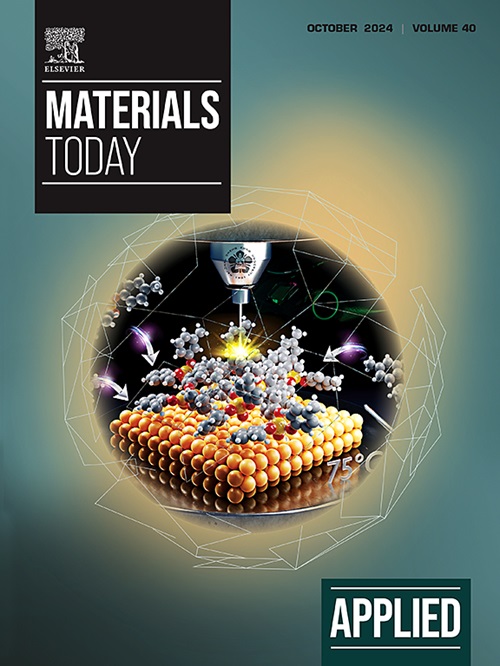Disulfide bond-based oxidation-responsive triptolide-loaded nanodrug for inflammation-targeted treatment of collagen-induced arthritis
IF 6.9
2区 材料科学
Q1 MATERIALS SCIENCE, MULTIDISCIPLINARY
引用次数: 0
Abstract
M1 macrophages play a crucial role in the development of rheumatoid arthritis (RA), which can produce various inflammation cytokines, and reactive oxygen species (ROS). Disulfide bonds as reduction-responsive linkages have been extensively employed in the drug delivery systems. However, disulfide bonds are rarely reported in the development of the oxidation-responsive drug carriers. Herein, we designed and synthetized novel oxidation-responsive drug carriers based on disulfide bonds, and further developed nanoparticles (FA-TP@NPs) by self-assembly for the RA treatment. FA-TP@NPs was decorated with folic acid and loaded with triptolide (TP), a potent anti-inflammation Chinese medicine, to target and enter M1 macrophages through the folate receptor on the cytomembrane for simultaneous repolarization of the M2 macrophage and elimination of the M1 macrophage. As expected, FA-TP@NPs exhibited an oxidation-responsive TP release via disulfide-bond oxidation and ester-bond hydrolysis in the presence of intracellular ROS, which accumulated preferentially in inflamed joints. FA-TP@NPs exerted a potent anti-arthritic effect with high biosafety in CIA mice, as evidenced by repolarizing M2 macrophages, inducing M1 macrophage apoptosis, and reducing TNF-α, IL-6, and IL-1β expression. This work shows that FA-TP@NPs give a deep insight into disulfide bond-based oxidation-responsive drug delivery systems, and provide a potential platform for RA treatment.基于二硫键的氧化反应型三苯氧胺负载纳米药物,用于炎症靶向治疗胶原诱导的关节炎
M1 巨噬细胞在类风湿性关节炎(RA)的发病过程中起着至关重要的作用,它能产生各种炎症细胞因子和活性氧(ROS)。二硫键作为还原反应性连接体已被广泛应用于给药系统中。然而,二硫键在氧化反应药物载体的开发中却鲜有报道。在此,我们设计并合成了基于二硫键的新型氧化反应药物载体,并通过自组装进一步开发了用于治疗 RA 的纳米颗粒(FA-TP@NPs)。FA-TP@NPs用叶酸装饰,并负载了一种强效抗炎中药--曲托内酯(TP),通过胞膜上的叶酸受体靶向进入M1巨噬细胞,同时使M2巨噬细胞极化并清除M1巨噬细胞。正如预期的那样,FA-TP@NPs 在细胞内 ROS 的存在下,通过二硫键氧化和酯键水解表现出氧化反应性 TP 释放,而 ROS 在发炎的关节中优先积累。FA-TP@NPs在CIA小鼠中发挥了强效的抗关节炎作用,生物安全性高,表现为使M2巨噬细胞恢复极性,诱导M1巨噬细胞凋亡,降低TNF-α、IL-6和IL-1β的表达。这项工作表明,FA-TP@NPs 深入揭示了基于二硫键的氧化反应给药系统,并为治疗 RA 提供了一个潜在的平台。
本文章由计算机程序翻译,如有差异,请以英文原文为准。
求助全文
约1分钟内获得全文
求助全文
来源期刊

Applied Materials Today
Materials Science-General Materials Science
CiteScore
14.90
自引率
3.60%
发文量
393
审稿时长
26 days
期刊介绍:
Journal Name: Applied Materials Today
Focus:
Multi-disciplinary, rapid-publication journal
Focused on cutting-edge applications of novel materials
Overview:
New materials discoveries have led to exciting fundamental breakthroughs.
Materials research is now moving towards the translation of these scientific properties and principles.
文献相关原料
公司名称
产品信息
阿拉丁
triptolide
阿拉丁
caprolactone
阿拉丁
Folic acid (FA)
 求助内容:
求助内容: 应助结果提醒方式:
应助结果提醒方式:


